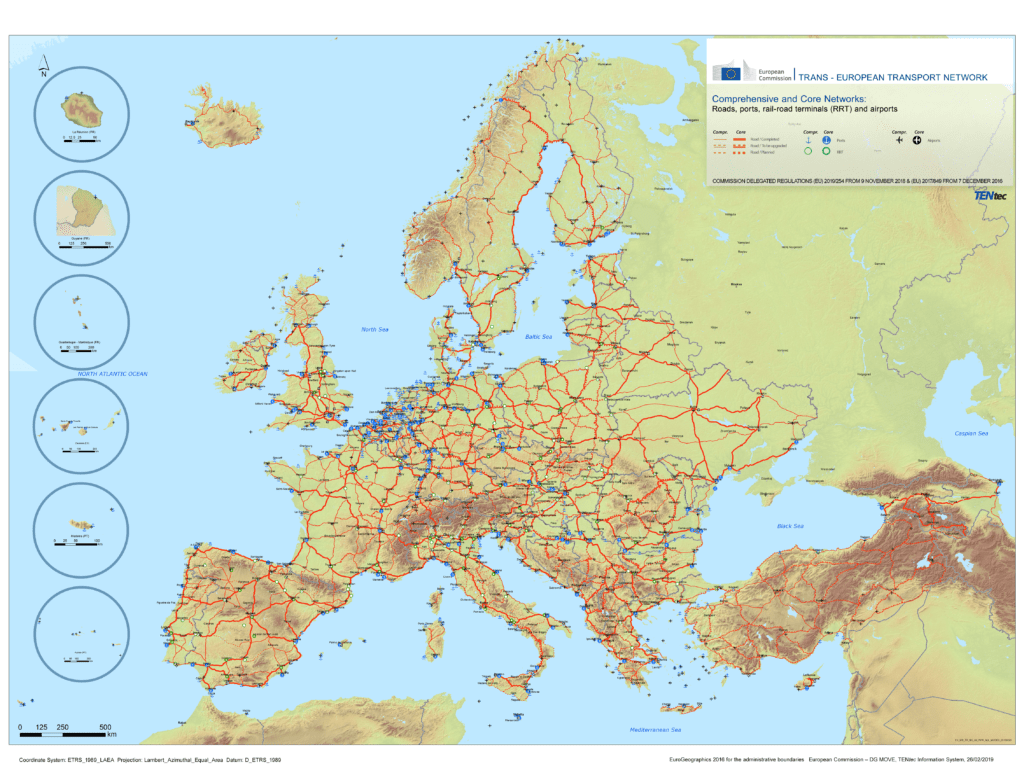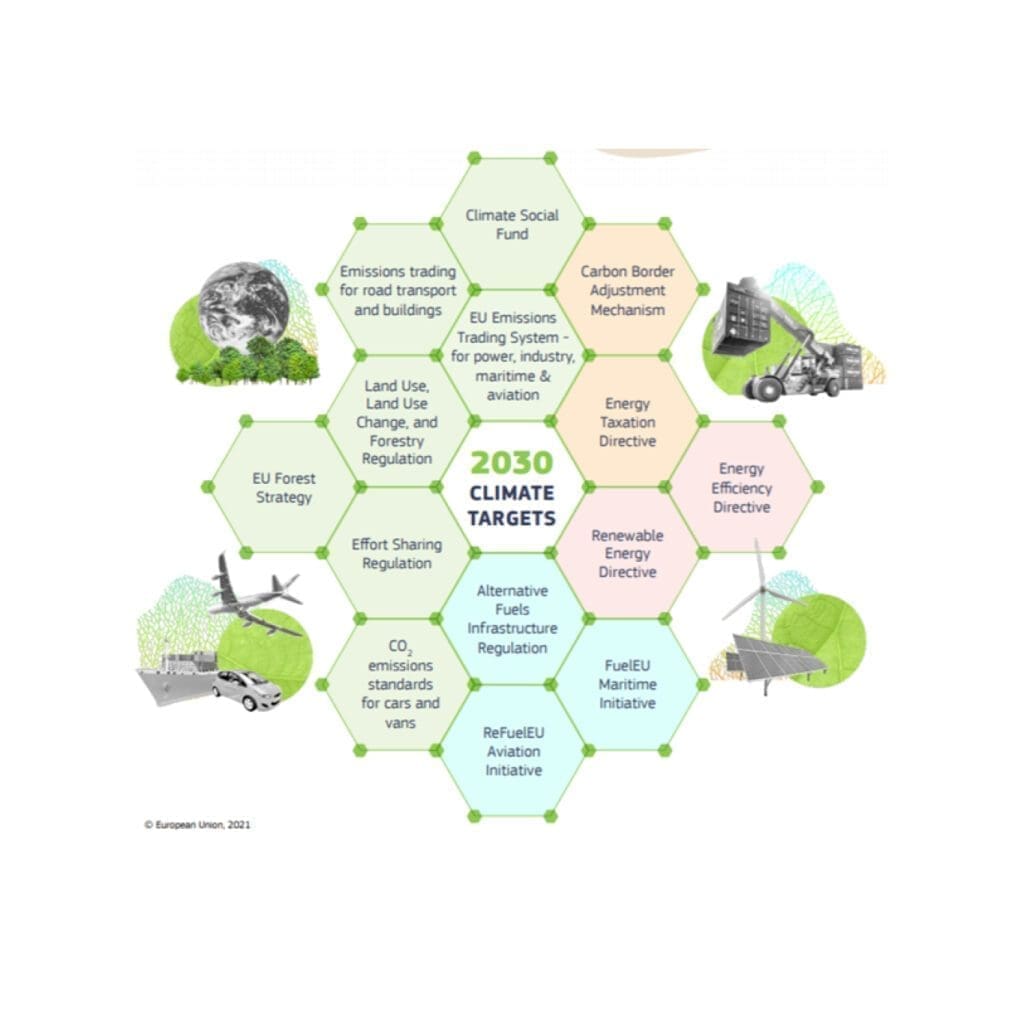Fit for 55 Getting Closer and Closer to Becoming Reality
Home Fit for 55 Getting Closer and Closer to Becoming Reality
The Fit for 55 package, part of the European Green Deal, is a set of proposed technical revisions to the EU’s current Climate, Energy and Transport legislations. These revisions are meant to ensure that the EU achieves its ambitious target of a 55% reduction in greenhouse gas emissions (GHG) by 2030.
The package is now being discussed by the European Council, which is made up of the heads of state or government of the 27 EU member states, along with the President of the European Council and the President of the European Commission. The heads of states welcomed the package, emphasizing the need for fairness, solidarity, ambition and efficiency between member states as being key factors in enabling the EU to lead the way in meeting the goals set out in the Paris Climate agreement.
With this in mind, the Council aims to reach common positions and enact them into law by the end of 2023. They also intend to incorporate the key milestones to be presented at the Cop26, which will be held in November 2021.
The proposals being discussed will undoubtedly impact a lot of private and public areas. Here, we look at a few of these proposals.
Stronger Emissions Trading System (ETS)
The EU ETS sets an emission price for each tonne of carbon. Binding to around 10,000 heavy industries, mainly the steel, chemicals and energy sectors, the scheme covers about 40% of the EU’s GHG appraisal.
The Fit for 55 package proposes to revise the ETS scheme in order to reduce these industries’ emissions by 61%, compared to 2005 levels. This is an increase from the 43% as per the Commission comments.
To accomplish this, the revisions would:
- Include the production of hydrogen with electrolysis in the EU emissions trading scheme, making renewable and low-carbon facilities eligible for free allowances
- Phase out the exemptions for the aviation sector
- Bring the shipping industry into the scheme
- Create a separate mechanism for road transport and the heating of buildings, which would go into effect starting in 2026
- Implement a Carbon Border Adjustment Mechanism to avoid carbon leakage (i.e., delocalize EU industrial facilities)
A 10 years transition period will be granted to specific industries, but the number of permits and free quotas will be gradually reduced. Consequently, a significant increase in the price of CO2 per ton is expected.
It should also be noted that these sectors will receive 100% of their allocation for free, while others will see the free allocation phased out after 2026, from a maximum of 30% to 0 at the end of the decade. Several low-carbon funding mechanisms will also be set up to help energy-intensive industries and power sectors meet the innovation and investment challenges of transitioning to a low-carbon economy.
Updating the Energy Efficiency, Renewable Energy, and Energy Taxation Directives
Some of the proposed revisions would play a pivotal role in reaching the 55% reduction goal by reconfiguring the EU energy mix. These include:
- The target for the EU’s production of renewable sourced energy is increased to 40% by 2030 (from 20% in 2020)
- A 36% reduction in the EU’s total energy consumption (up from 32.5%)
- An a least 49% share of renewable sourced energy will be required for all new buildings
- The target for reducing the energy consumption and renovation rate in buildings has been raised to 3% per year, overtaking the ‘Renovation Wave’s’ initial objective of 1.5% for energy savings and 2% for renovation
- The 55% update also aims to raise tax levels on fossil fuels, end many exemptions, and extend fuel tax rules to such areas as aviation and maritime transport
CO2 Regulations
This proposed revision is, without contest, the most disruptive one, a game changer that could strongly leverage fuel cell electric and battery electric vehicles. Specifically, the revision sets forth a new European CO2 target of a 100% emission reduction in new cars by 2035, automatically excluding thermal motorisation. As a start, manufacturers will need to reduce emissions for new production cars by 55% and by 50% for vans by 2030, compared to the current target of 37.5%.
Alternative Fuels Infrastructure Regulation
In addition to the CO2 proposals, the proposed revisions would ensure that, by the end of 2030, publicly accessible hydrogen refuelling stations with a minimum capacity of 2 t/day and equipped with at least a 700 bars dispenser are deployed at distances of no more than 150 km between chargers along the entire TEN-T network (major highways running across Europe) for both light and heavy duty vehicles.
Furthermore, liquid hydrogen will be made available at publicly accessible refuelling stations with a maximum distance of 450 km between stations, with at least one station made available in Urban node too. This opens the way for over 800 hydrogen refueling stations across Europe.
The revision isn’t limited to hydrogen, it also calls for EV charging points to be installed every 60 kms along every major road on the continent. And last but not least, national policy frameworks shall provide deployment plans for alternative fuel infrastructure for inland waterway transport, maritime ports, airports, and trains, with specific attention made to hydrogen.

Trans European Transport Comprehensive and Core network (Ten-T)
A Green Reality?
Is the Green Deal becoming a reality? On the one hand, the Green Deal roadmap aims to achieve a 6 GW electrolyser capacity in the EU by 2024. However, this will not be reached until 2025 due to a longer legislation schedule. Yet, that being said, planned projects are set to break records, reaching 100 GW in Europe by 2030, far surpassing the original target of 40 GW set in December 2020 when the Green Deal was launched. In other words, EU industries have fully embraced the ‘green journey’ and are taking the lead in making the Green Deal a reality.
As the Fit for 55 package moves forward, we at Aperam will follow the outcomes of this legislative package and look forward to discussing these and numerous other sustainable opportunities with you. Stay tuned!


 -0,52%
-0,52%